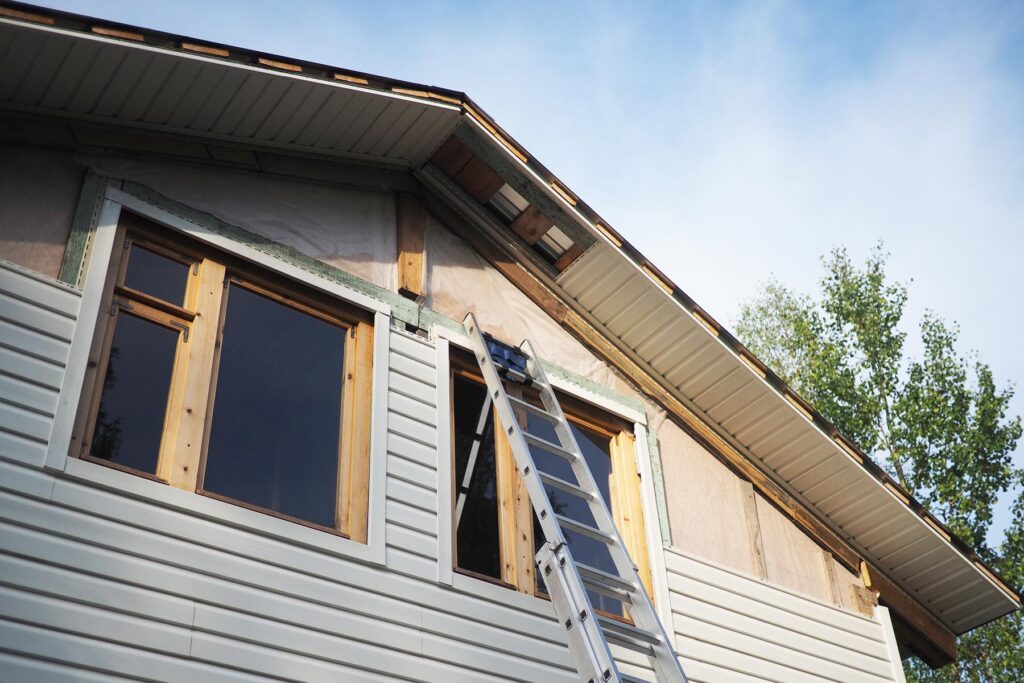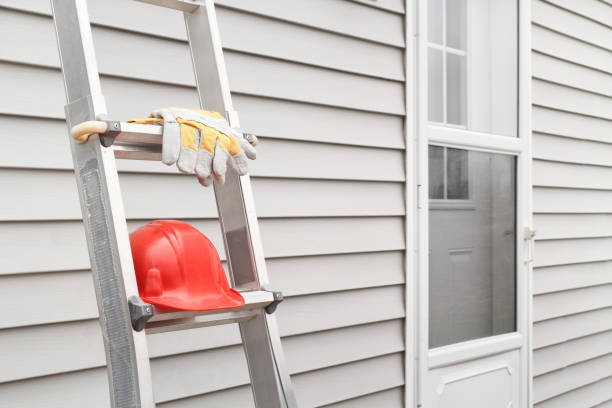Siding plays a crucial role in safeguarding your home from harsh weather conditions, moisture intrusion, and pest infestations. It also enhances curb appeal, boosting your home’s overall value. However, when siding starts to deteriorate, it can compromise both protection and aesthetics.
Ignoring siding damage can lead to costly repairs, including structural issues, mold growth, and insulation problems. Homeowners who identify early warning signs can take proactive steps to prevent extensive damage and maintain their home’s integrity. In this article, we’ll cover the most common signs that indicate it’s time for siding repair or replacement.

Visible Cracks and Gaps: An Open Invitation to Damage
Cracks, gaps, or loose siding panels are clear indicators that your home’s exterior protection has been compromised. Even small openings can allow moisture to seep behind the siding, leading to mold growth, wood rot, and even structural damage. Additionally, pests such as termites and rodents can use these gaps as entry points into your home.
When water infiltrates through cracks, it can weaken the insulation, making your home less energy-efficient. Over time, this can lead to higher heating and cooling costs. If you notice any visible damage, it’s essential to address the issue before it worsens.
Regular inspections can help detect cracks early. If you find any openings in your siding, consider sealing minor gaps immediately. However, widespread or severe damage may require a professional evaluation and possible replacement.
Warping or Buckling: A Sign of Moisture Intrusion
Warped or buckled siding is often a red flag for moisture problems beneath the surface. When water gets trapped behind the panels, it causes them to expand and lose their shape. This warping not only affects your home’s appearance but also compromises its structural integrity.
To check for warping, run your hand over the siding and feel for any uneven or bulging areas. If the surface isn’t smooth, it may be a sign that water damage is occurring beneath. In some cases, moisture can penetrate deeper, affecting the framing and insulation inside your walls.
If left unaddressed, warped siding can result in costly repairs down the line. Replacing damaged sections or investing in high-quality, moisture-resistant siding can help protect your home from future issues.
Mold, Mildew, or Fungus Growth: A Hidden Danger
The presence of mold, mildew, or fungus on your siding—especially near the seams—can be a sign of trapped moisture. While some mildew may be superficial, excessive growth suggests that water is collecting where it shouldn’t be.
Moisture buildup can cause not only exterior damage but also internal structural decay. If mold spreads, it can weaken walls, reduce air quality inside the home, and even pose health risks to your family.
Regularly inspect your siding for discoloration or growth. If you notice persistent mold or mildew, a professional inspection can determine the extent of the problem and whether a simple cleaning or a full siding replacement is necessary.
Fading or Peeling Paint: A Sign of Aging Siding
Over time, siding is exposed to harsh sunlight, wind, and rain, leading to fading or peeling paint. While normal weathering occurs, excessive fading may indicate that your siding is no longer effectively protecting your home from the elements.
Modern siding materials are designed to last for years without needing frequent repainting. If your siding’s color has significantly dulled or the paint is peeling, it might be a sign that the material underneath is deteriorating.
Rather than continuously repainting, which can be costly and time-consuming, consider upgrading to new, durable siding that requires minimal maintenance and enhances your home’s appearance.
Increased Energy Bills: A Hidden Cost of Siding Damage
Damaged siding can have a direct impact on your home’s energy efficiency. When siding deteriorates, it allows air leaks that make it harder to regulate indoor temperatures, leading to increased heating and cooling costs.
If you’ve noticed a steady rise in your energy bills despite consistent usage, failing insulation due to damaged siding could be the culprit. Poor insulation forces your HVAC system to work harder, reducing efficiency and driving up costs.
Replacing old or compromised siding with modern, energy-efficient materials can help lower your energy bills while improving comfort levels inside your home.

Rotting or Soft Spots: A Sign of Advanced Decay
Siding should feel solid and sturdy when pressed. If you notice soft or spongy areas, it’s a strong indication of rot or structural deterioration underneath.
Rotting wood siding can spread quickly, leading to significant damage that affects both the exterior and interior of your home. Once rot sets in, repairs become more complicated and costly.
To prevent further damage, inspect your siding regularly for soft spots or signs of decay. If detected, immediate repairs or replacement are necessary to protect your home from worsening structural issues.
Interior Signs of Damage: When the Problem Moves Indoors
While exterior damage is easier to spot, interior warning signs should not be ignored. Peeling paint, bubbling wallpaper, and mold growth inside your home could indicate water infiltration due to failing siding.
When siding no longer provides a protective barrier, moisture can seep into your walls, leading to structural weakness and mold-related health hazards. If left unchecked, this can cause extensive and costly repairs.
If you notice unexplained moisture or damage inside your home, inspect your siding for exterior problems. Addressing the issue early can prevent more severe interior damage in the long run.
Frequent Maintenance Needs: Time to Consider Replacement
While some siding materials require occasional upkeep, constantly repairing or repainting siding could be a sign that replacement is a more cost-effective solution. If your siding demands frequent touch-ups, it may no longer be functioning as it should.
Old, worn-out siding can become a money drain due to continuous maintenance costs. Instead of repeatedly patching up problem areas, investing in new siding can save you money in the long term.
Upgrading to modern, low-maintenance materials ensures that your home remains protected and visually appealing with minimal effort.

Protect Your Home Today
Recognizing the early signs of siding damage can save homeowners from costly repairs and prevent serious structural issues. From cracks and warping to increased energy bills and mold growth, addressing siding problems promptly ensures your home remains safe, efficient, and beautiful.
If you’ve noticed any of these warning signs, don’t wait until the damage worsens. Visit Grimes Construction for a professional siding inspection.
Contact us today for a free siding inspection and estimate! Let us help you protect and enhance your home with expert siding repair and replacement services.
